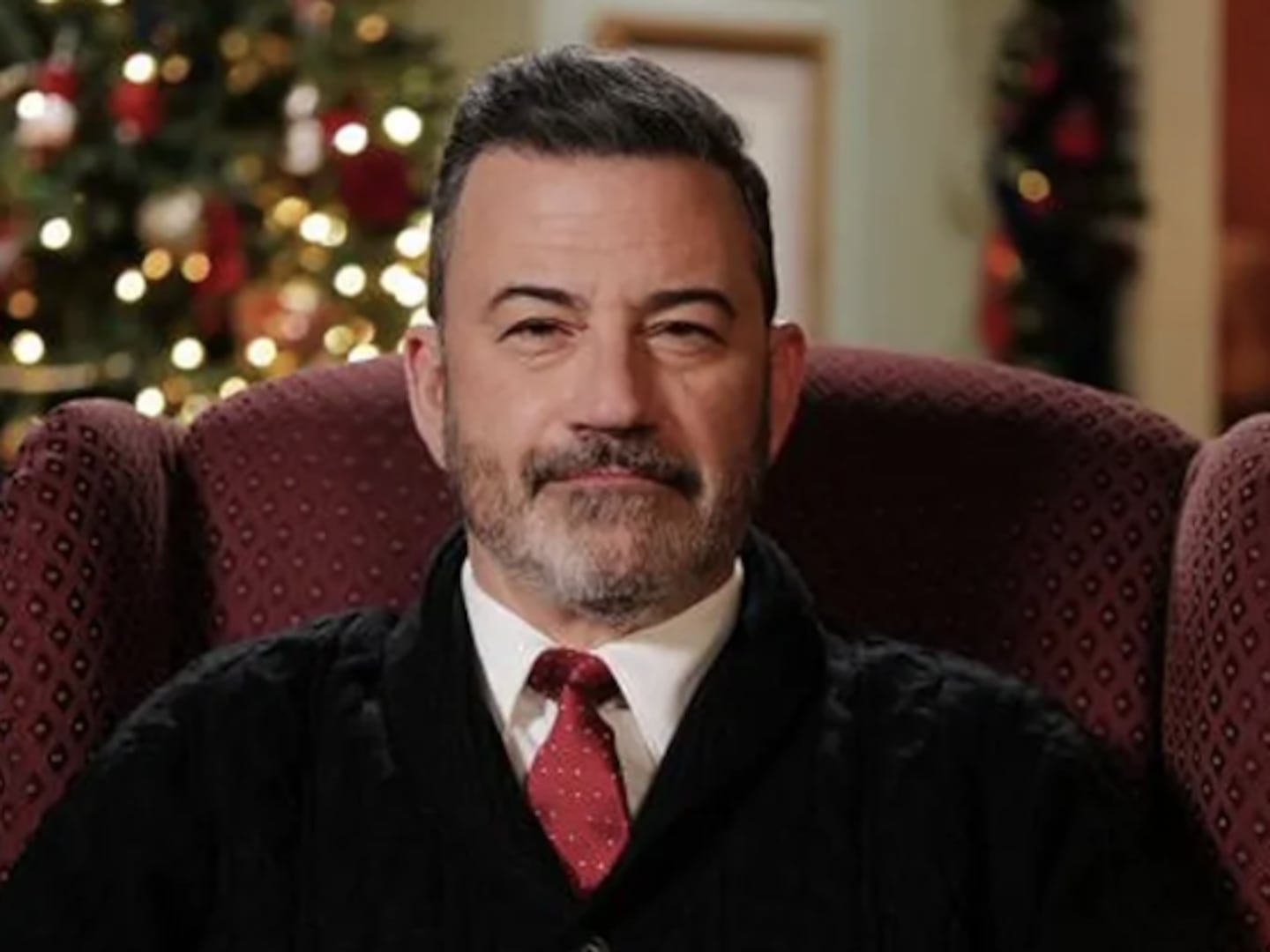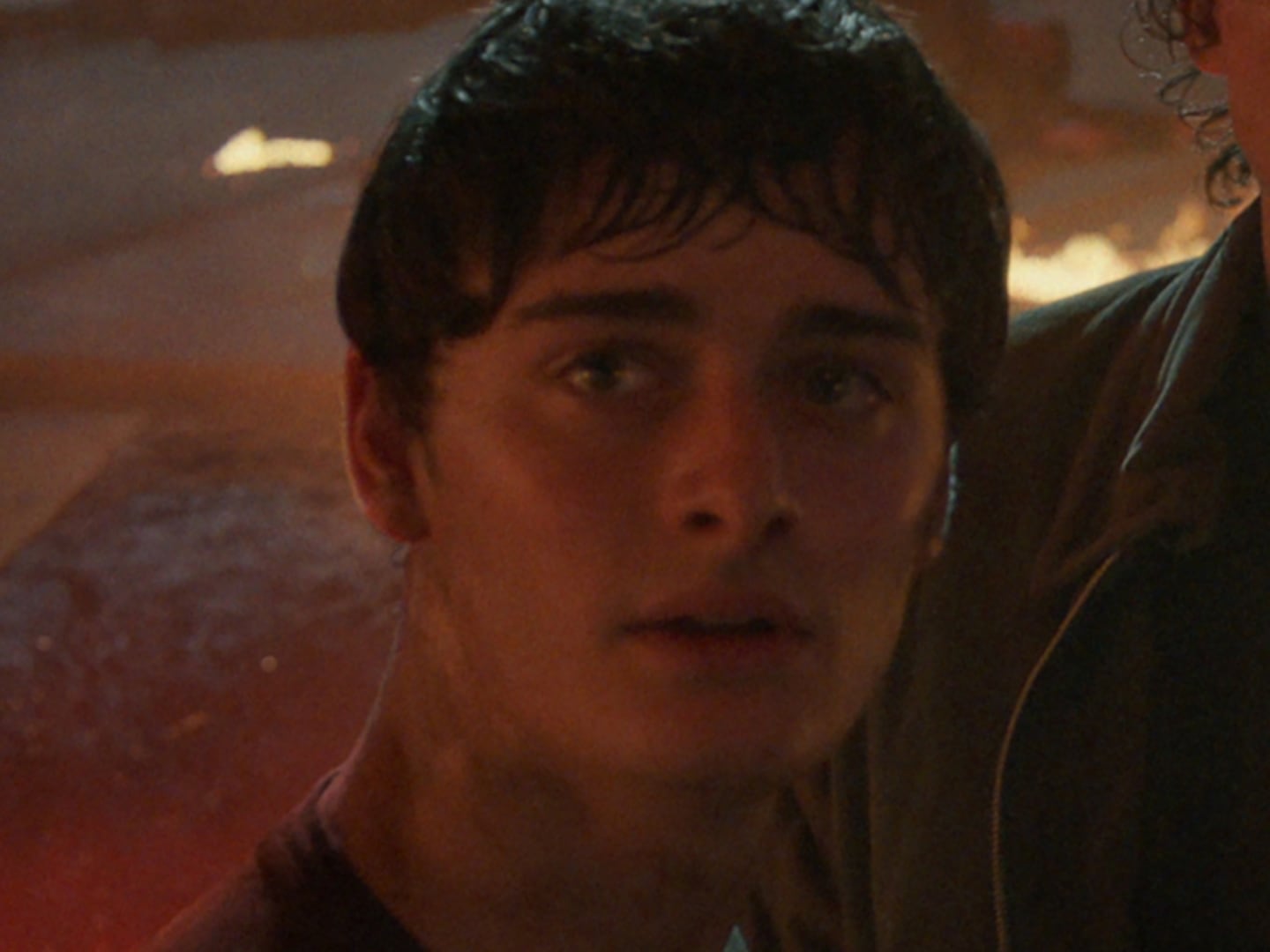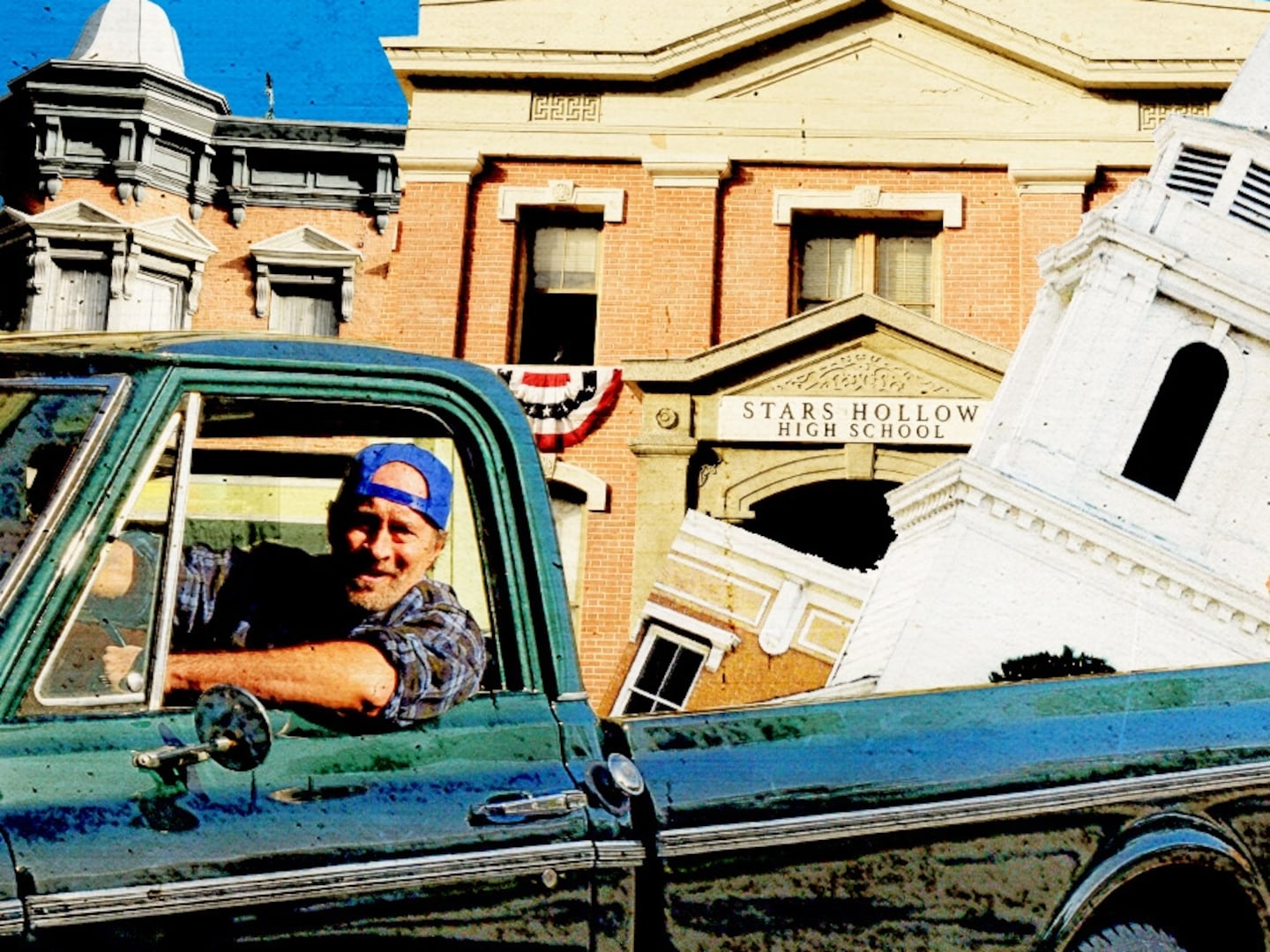The saying that “all press is good press” perpetuates, even as the media industry and how we consume content rapidly changes. And the person who keeps that phrase near the top of our cultural minds is probably also the publicist for one deranged looking horse that won viral attention over the summer.
Given their stature in the industry, the critical accolades that typically follow their work, and the respective thrones on which they sit as the internet’s favorite crushes, Andrew Garfield and Florence Pugh starring together in a screen romance would generate its own, organic excitement.
Yet We Live in Time, which expands to wide release this weekend, landed like a thunderbolt in the social media zeitgeist when a promotional poster for the movie was released featuring the two stars looking lovingly at each other—and a carousel horse looking like it had just taken a hit of acid and gone to see a fireworks show.
“I thought it was hysterically funny,” John Crowley, who directed We Live in Time, tells the Daily Beast’s Obsessed. “I am not on social media, so I arrived slightly late to the party.”

Crowley, whose previous films include Brooklyn and Boy A, found out about the viral memes made about the poster when Stephen Colbert brought it up on The Late Show. His kids started showing him all the permutations. “I thought it was good-spirited hilarity, and just as a phenomenon on the internet, it was joy filled. People can be extremely witty when they want to be, and that sphere can be quite mean. I thought it was very playful and lovely.”
Still, he admits, “We were a bit nervous. Is this all as straightforwardly good as it looks? Will it damage anything? And no, it just felt like it was a very happy whirlwind bit of publicity and fun.”
It’s also, as you’ll learn when you watch the film, perfectly appropriate for We Live in Time.
For a movie that should require its audience to purchase a box of Kleenex along with their cinema tickets, it has a wily, mischievous sense of humor. We Live in Time is a story about a couple who meet-cute in absurd fashion, only to fall deeply in love and navigate the most magnificent joys and horrific tragedies that are to come when you find the person you’re meant to share your life—and death—with.
That humorous streak should be expected given the personalities of its two stars; Garfield did, after all, recently cart a life-sized cardboard cutout of Pugh around the red carpet of a premiere she couldn’t attend. It’s also why the film has been compared to works of Richard Curtis like Four Weddings and a Funeral and Love, Actually. It understands that the hardest, saddest moments of a life with someone vibrate with such extreme emotion because they’re a culmination of the ecstatic joys, hard laughs, and deep love leading up to it. (Plus, there’s a birth scene in a gas station bathroom that is for the ages.)
We Live in Time plays with time. We see, out of order and jumping through the years, the relationship of Tobias (Garfield) and Almut (Pugh). Their love starts when he is hit by a car she’s driving the night he signs divorce papers ending his first marriage. Their ensuing relationship weathers complicated conversations about starting a family, and is rocked by her battle with cancer, which interrupts her career as a star chef.
The film hopscotches through the firecracker moments when their love sparks, the sex is great, and life with their daughter is the ideal of family bliss. It also shows us the painful conversations when they aren’t on the same page about their future, the struggle to get through betrayal, and the devastating slog a relationship endures when one person is battling a terminal disease.
Those are all the things that make a life, Crowley tells me, so it’s no surprise that the film is already earning a reputation as a tear-jerker for the ages. It’s all relatable, which he’s become keenly aware of as audience members, after early screenings, have accosted him, Garfield, and Pugh to share their own stories that resonate because of the film.
With We Live in Time now in wide release, we spoke with Crowley about the sensitivity required to tell a story about love and loss without being patronizing, avoiding “cancer movie” clichés, and why we all need to laugh through pain.

I’ve found that as I get older, I start to gravitate towards and seek out emotional things that will make me cry. You’re actually making that content. Do you find yourself seeking out that kind of material?
I’m as happy to watch Dune 2 as I am to watch Only Murders in the Building. I found Past Lives really moving for instance. Something that gives you that kind of heat in your solar plexus, that feels close to what it feels to be alive is very special and precious and rare. I do find it hard to not have some of that in a piece that I’m working on. Otherwise you are doing something which is closer to a technical exercise. I need an emotional compass and an emotional point to making the whole thing. Otherwise, I don’t know what you’re being fed back by when you’re actually making it.
People who watch this film and your past work like Brooklyn would probably assume you’re very in tune with your emotions. Do you feel that you are?
You’d probably have to ask the people around me. (Laughs) I would say that I’m incredibly emotionally intelligent and emotionally articulate, and my wife might say differently, or my kids might say differently. Maybe it’s quite present in me. I don’t think my work is in any way confessional. I don’t write my own scripts. I get drawn to the quality of the writing, and then you’re kind of smuggling emotion into it.
You’re smuggling a lot of emotion into this one.
I’m struck by how intense some of the reactions to the film have been. It’s not that I didn’t expect it, exactly. I’m just struck that it touches some people very, very deeply. Maybe that’s the mixture of the real elements that are in the film, alongside the fact that some of these things that happen in the film are some of the most profound things that happen to people in their daily lives.
That’s why people are so moved.
I didn’t set out to do that. I set out to make a really good film, and to have it beautifully acted and for it to be moving. But it hits the nerve in certain people. I guess falling in love, having a child, and facing mortality are some of the biggest things that people face in their lives. So perhaps it’s not surprising that it will hit some people much harder than others.
There are people who are going to see this film because they want to have a good cry. They are seeking out that cathartic relief. Was that ever on your mind while you were making it?
I think I was aware when I was making it that we had to get it right for members in the audience who had experience of [its content]. You do not dabble with that as a means to move people. It has to be authentically done. I remember very vividly the very first reading of the screenplay. I was a little resistant to it. I was like, oof, I don’t know if I want to go into this. This world is quite sad. Do I really want to go there for a year and a half? I felt that up until I got as far as the birth scene, and then suddenly, I felt the polarity of emotions that were in that scene.
That’s a scene that everyone’s going to be talking about.
I found myself laughing and crying at the same time in that scene. That’s all being held together in this container of absurdity, as it were. The situation was so absurd, while the stakes were very high for these people. Suddenly I was like, God, now I know what this film is. It’s got to be light enough on his feet that it never just drops an audience into a bath of sadness and leaves them there. If you can do the really sad stuff, the intense stuff, and there’s humor and irony and playfulness in the mix all the time, then you’re making something which feels light.

That’s the nature of life.
In my experience of sad things, absurdity is always along as a fellow traveler. Humor is never that far from it, Especially in Ireland. You know. People always laugh at Irish funerals and cry at Irish weddings. I know that’s a cliché, but there’s a truth in it, which is a degree of understanding about the emotions that are in the middle of adversity. I think if people who have experience with the actual events in the film find a joyful release in it, I would be very happy. It’s not a simple, singular experience of “you will go and you will just cry.” I would hope that the tears are as much tears of laughter as well as you’re just shedding them.
The way time and these characters’ relationship is depicted in the film is unique, because it jumps back and forth. How do you think that changes the way we view a quote-unquote “cancer movie”?
The first thing to say about that is we always knew we never wanted to make a film about physical decline. We would never see her death on screen. Because it was a film about two people trying to make sense of their life within the short period of time they have left together, it was asking a question, in a way, about what is the nature of a good life? Being able to move around in time meant we didn’t have to do the beginning, the middle, and end of all of this stuff, as it were. You could show multiple facets of that relationship, so that by the end of your time with them, you would have seen lots of chunks of different bits, like a diamond or a cubist painting.

Right. By breaking it up, you see more of a whole.
It was a very deft way of covering a huge amount of territory in the relationship, so that it wasn’t simply somebody gets sick and then it’s a straight line towards their ultimate demise. It allows us to look at their attempts to make their life together, from the early days of their relationship right through to the moment when they wave bye to each other.
The road isn’t ever a straight one.
There’s a playfulness to it, which hopefully connects to people’s own feelings of how they experience time. When you think about memories, they come in shards or bits and pieces of scenes that you can remember.









